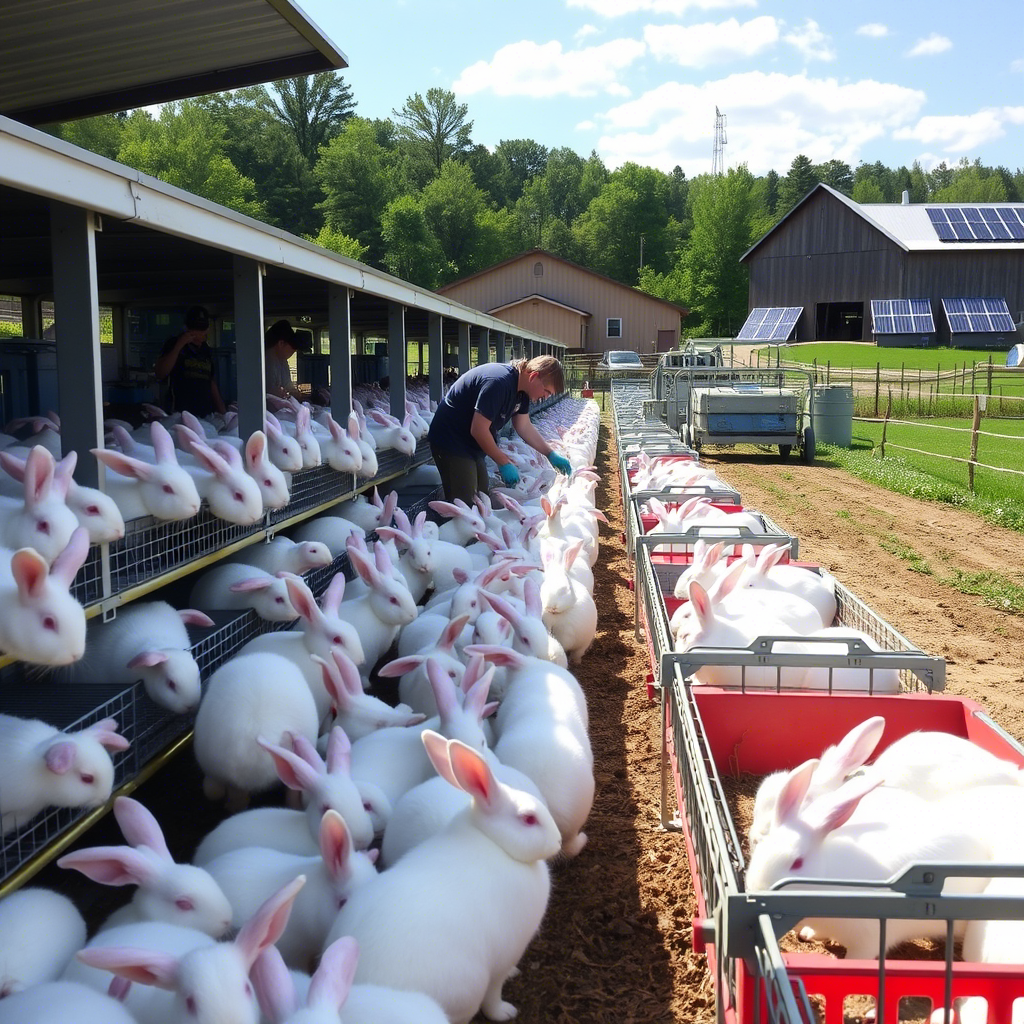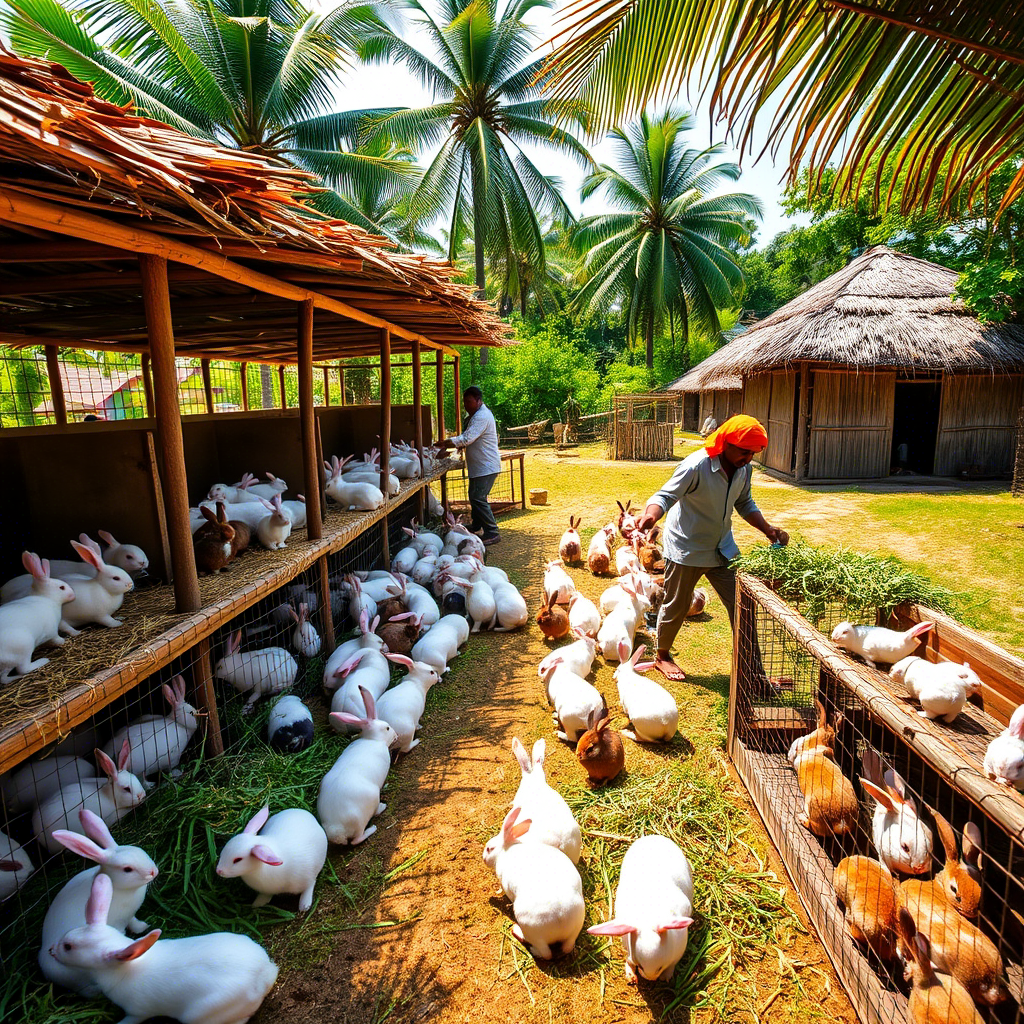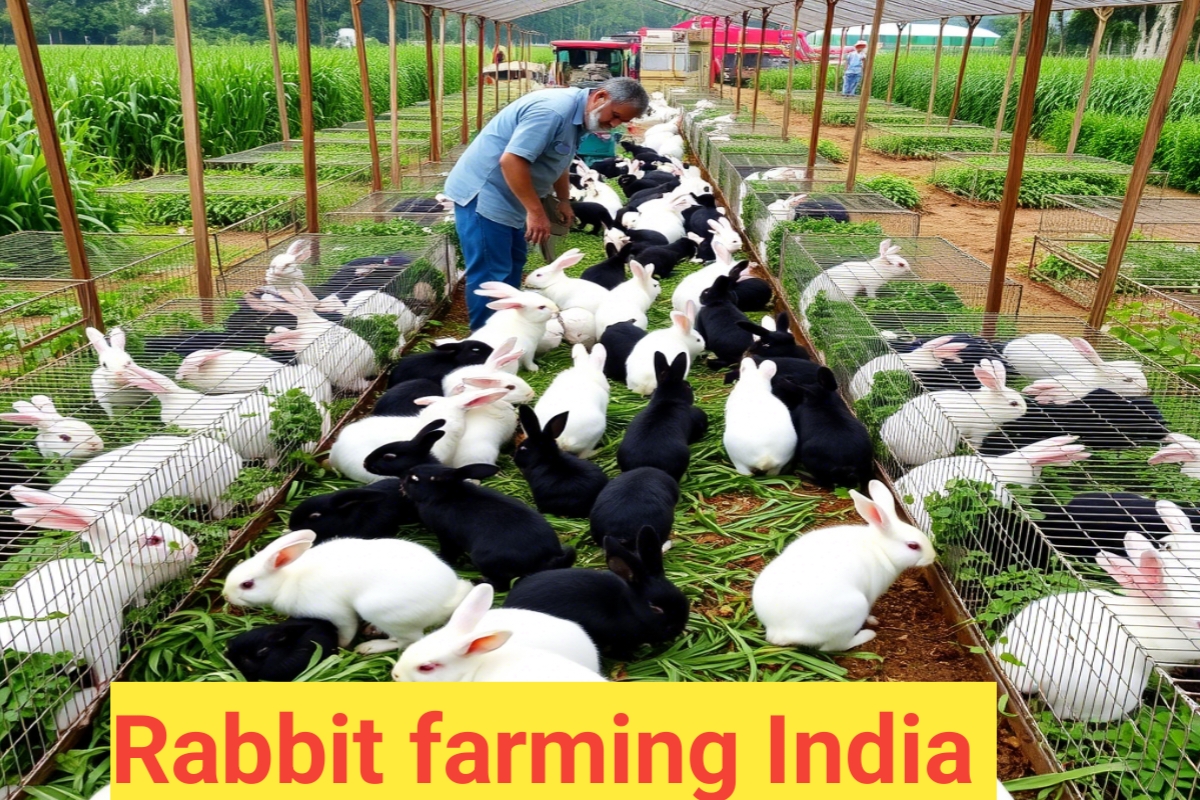Rabbit farming, or cuniculture, is gaining traction in India as a sustainable and profitable venture. With low investment, high reproductive rates, and diverse market opportunities, it’s an ideal agribusiness for smallholders. This guide provides a detailed, step-by-step approach to establishing and managing a successful rabbit farm in India, complete with actionable insights and tables for clarity.
Step 1: Understanding Rabbit Farming Basics
Rabbit farming offers multiple advantages:
- Low Space Requirement: Rabbits can be reared in compact cages.
- Rapid Reproduction: A doe can produce 30–40 kits annually.
- Dual-Purpose: Meat (high protein, low cholesterol) and wool (Angora breeds).
- Eco-Friendly: Minimal waste and methane emissions.

Ideal For: Rural entrepreneurs, women’s self-help groups, and urban pet businesses.
Step 2: Selecting Suitable Breeds
Choose breeds based on climate, purpose (meat/wool/pets), and market demand.
Table 1: Popular Rabbit Breeds in India
| Breed | Purpose | Characteristics | Avg. Weight (kg) | Litter Size |
|---|---|---|---|---|
| New Zealand White | Meat | White fur, fast growth | 4–5 | 8–12 |
| Soviet Chinchilla | Meat & Fur | Silver-gray fur | 3–4 | 6–8 |
| Dutch | Pets & Meat | Colorful markings | 2–3 | 4–6 |
| Angora | Wool | Long, soft fur | 2–3 | 4–5 |
| Grey Giant | Meat | Large size, hardy | 5–6 | 6–8 |
Tip: Start with New Zealand White or Soviet Chinchilla for meat; Angora for wool.
Step 3: Setting Up Housing Infrastructure
Rabbits need clean, ventilated, and predator-proof housing.
Key Housing Types:
- Wire Mesh Cages: Galvanized wire, raised 3–4 ft above ground.
- Wooden Hutches: Insulated for colder regions.
Table 2: Housing Specifications
| Type | Material | Size (L×W×H in ft) | Features |
|---|---|---|---|
| Wire Mesh Cage | Galvanized wire | 3×2×2 | Easy cleaning, ventilation |
| Wooden Hutch | Wood & mesh | 4×3×3 | Insulated, durable |
Requirements:
- Space: 1–2 sq. ft per rabbit.
- Flooring: Slatted or wire mesh for waste removal.
- Protection: Shade nets in summer, heaters in winter.
Step 4: Feeding and Nutrition Management

Rabbits require a balanced diet of greens, concentrates, and hay.
Table 3: Daily Feeding Guide
| Feed Type | Quantity (per rabbit) | Nutritional Role | Feeding Time |
|---|---|---|---|
| Green Fodder | 200–300g | Fiber, vitamins | Morning & Evening |
| Concentrates | 50–100g | Protein, energy | Morning |
| Hay | Ad libitum | Digestive health | Always available |
| Clean Water | 500ml/day | Hydration | Refilled daily |
Common Fodder: Lucerne, maize, cabbage, carrot tops.
Avoid: Iceberg lettuce, potatoes (toxic).
Step 5: Health Care and Disease Management
Prevent diseases through hygiene, vaccination, and regular check-ups.
Table 4: Common Rabbit Diseases & Management
| Disease | Symptoms | Prevention | Treatment |
|---|---|---|---|
| Pasteurellosis | Sneezing, nasal discharge | Vaccination, clean housing | Antibiotics |
| Coccidiosis | Diarrhea, weight loss | Anticoccidial feed additives | Sulfa drugs |
| Myxomatosis | Swollen eyes, fever | Vector control (fleas/mosquitoes) | Supportive care |
Vaccination Schedule:
- Pasteurellosis: At 6 weeks, booster every 6 months.
- Rabbit Hemorrhagic Disease: Annually.
Step 6: Breeding and Reproduction Management
Breeding requires careful planning to ensure healthy litters.
Table 5: Breeding Guidelines
| Parameter | Details |
|---|---|
| Breeding Age (Doe/Buck) | 5–6 months / 6–7 months |
| Gestation Period | 28–31 days |
| Litter Size | 4–12 kits |
| Weaning Age | 4–6 weeks |
Tips:
- Pair does with bucks during cool hours (early morning/evening).
- Separate kits from the mother at weaning to avoid stress.
Step 7: Marketing and Financial Planning
Identify niche markets for meat, wool, and pets.
Table 6: Marketing Channels & Pricing
| Product | Market Channel | Price Range (INR) |
|---|---|---|
| Meat | Restaurants, hotels | ₹200–300/kg |
| Wool | Handicraft industries | ₹500–1,000/kg |
| Live Rabbits | Pet stores, online | ₹1,000–5,000 per rabbit |
Table 7: Economic Breakdown (Small-Scale Farm)
| Cost Component | Initial (INR) | Recurring (Monthly INR) |
|---|---|---|
| Housing Setup | 20,000 | – |
| Breeding Stock | 15,000 | – |
| Feed | – | 5,000 |
| Veterinary Care | – | 1,000 |
| Total | 35,000 | 6,000 |
Revenue: Selling 40 rabbits/month at ₹300 each = ₹12,000.
Profit: ₹12,000 – ₹6,000 = ₹6,000/month.
Conclusion
Rabbit farming in India is a low-risk, high-reward venture with proper planning. By selecting suitable breeds, maintaining hygiene, and tapping into niche markets, farmers can achieve sustainable profits. Leverage government schemes like NABARD subsidies and collaborate with local veterinary services for success. Start small, scale wisely, and hop into this burgeoning industry today!
